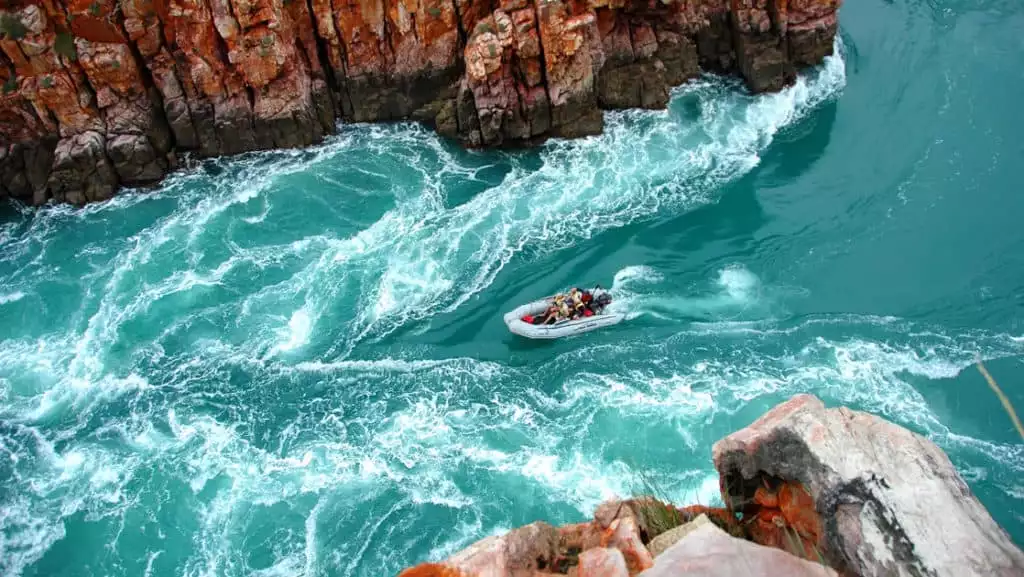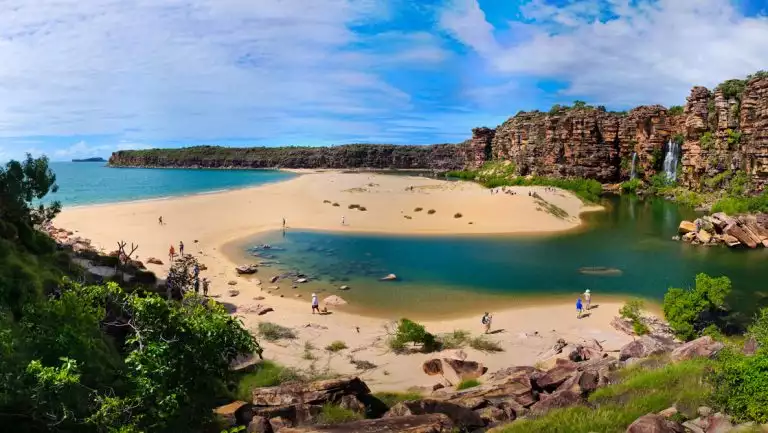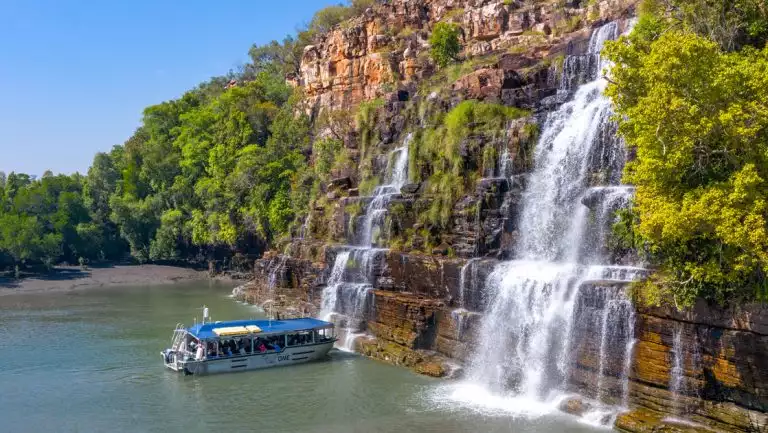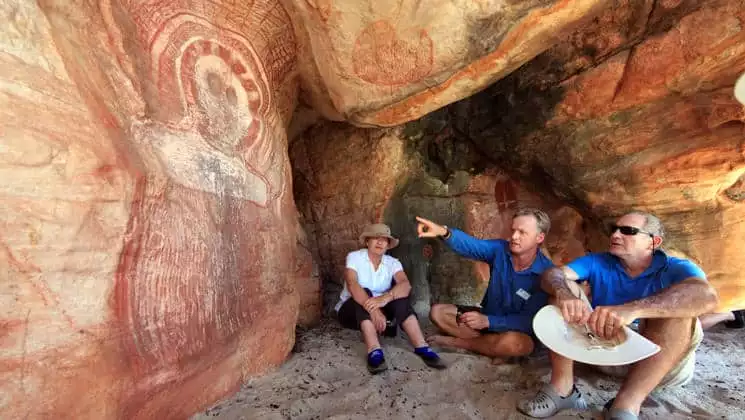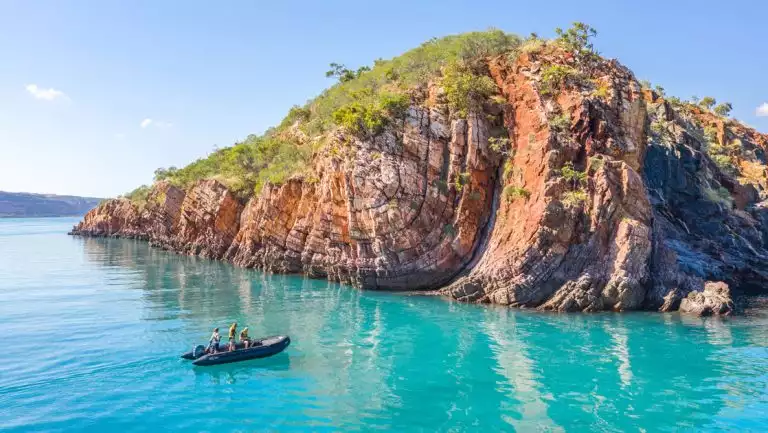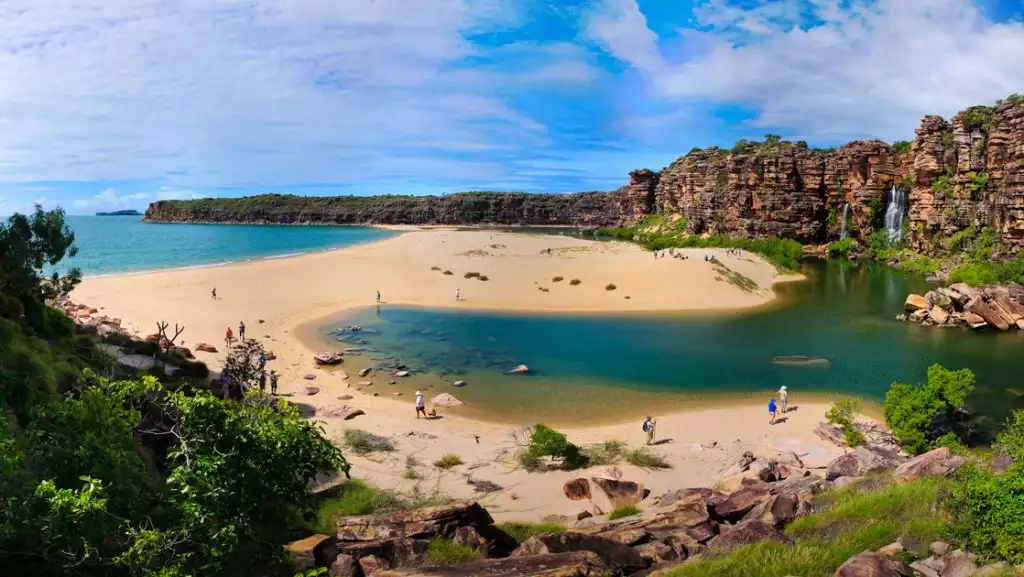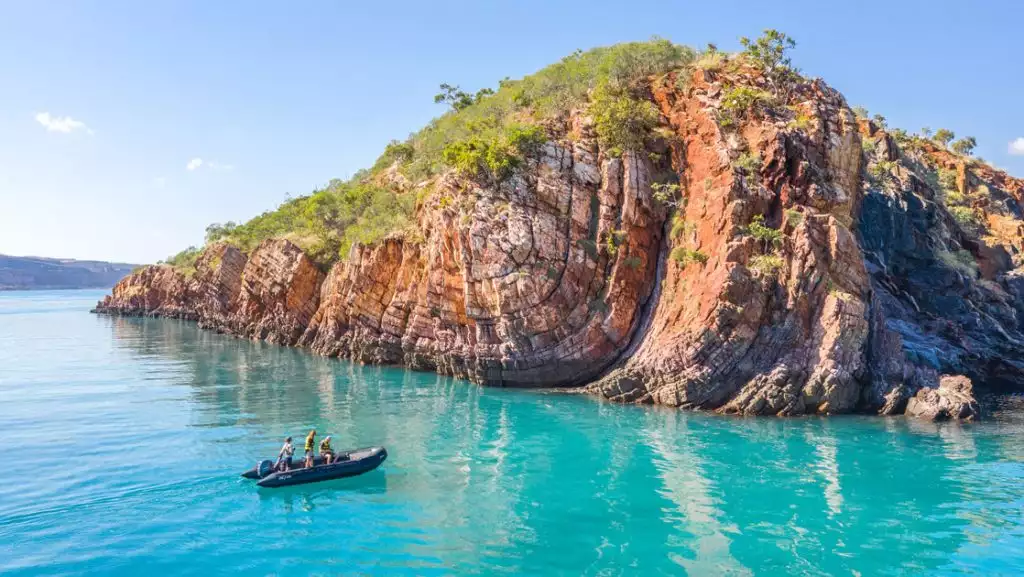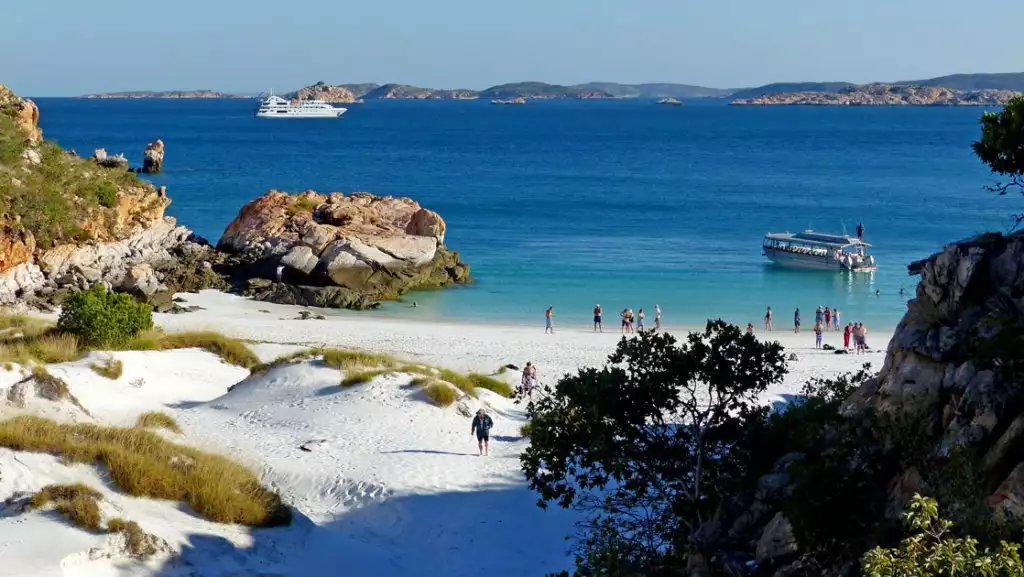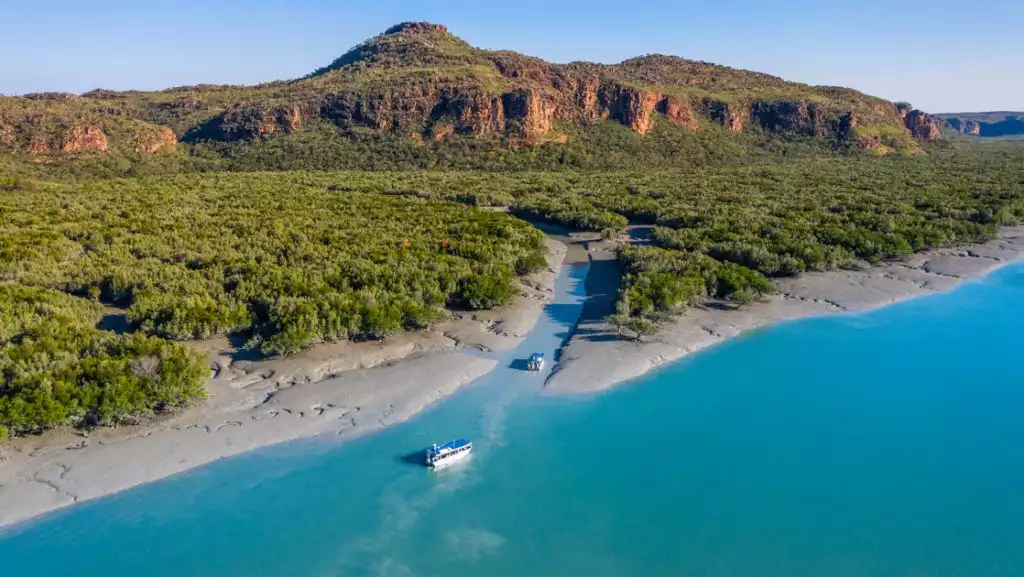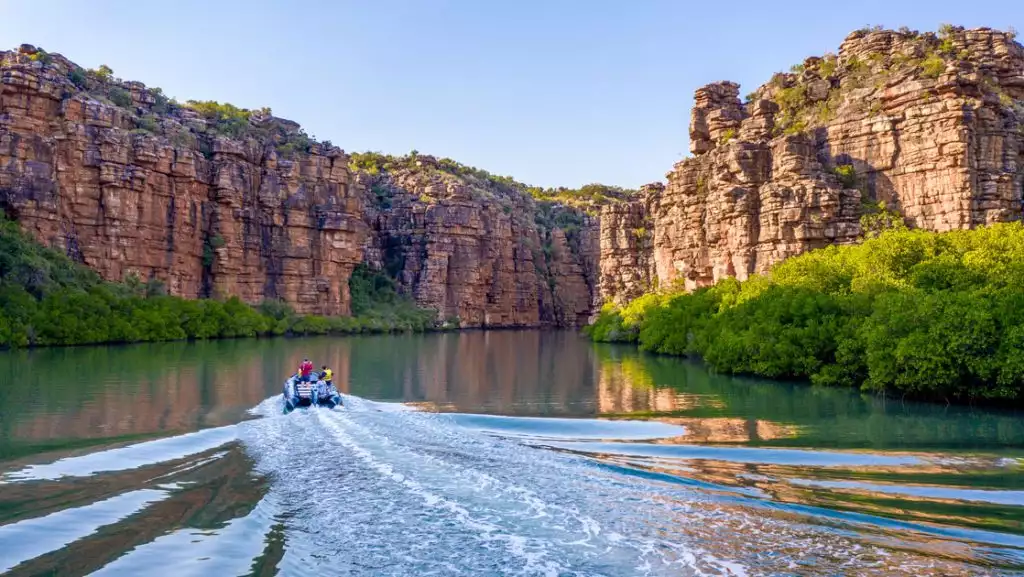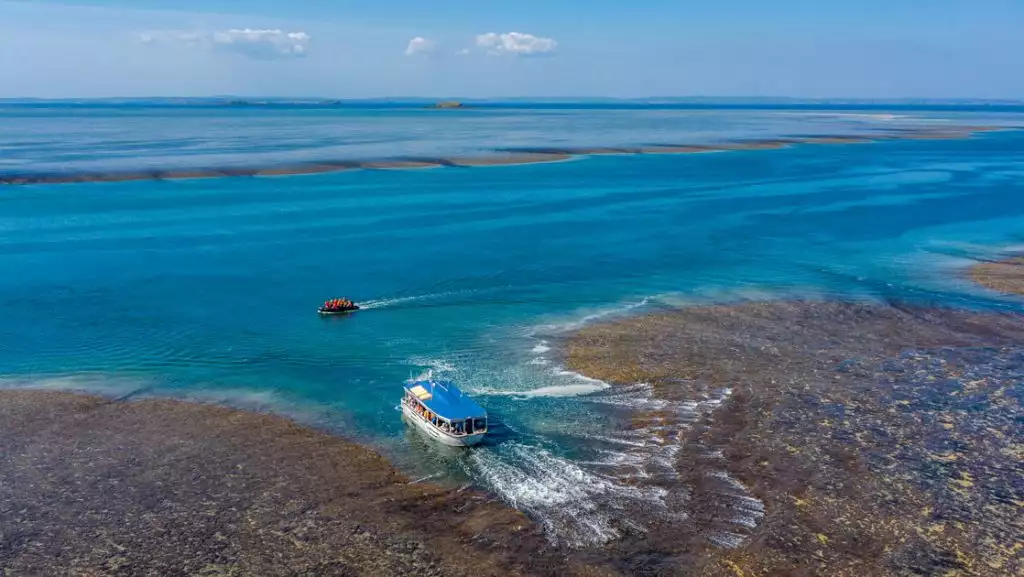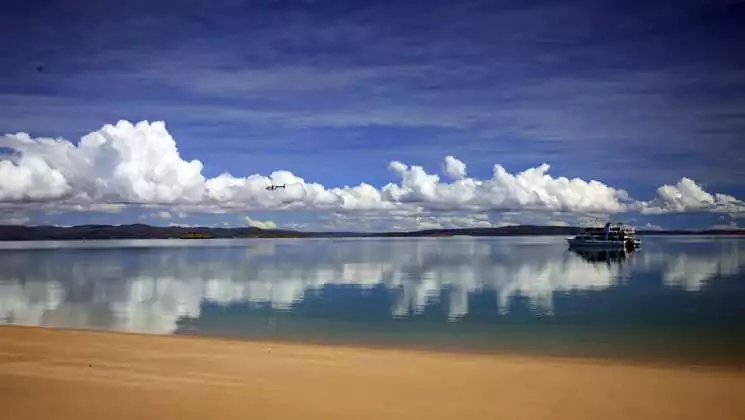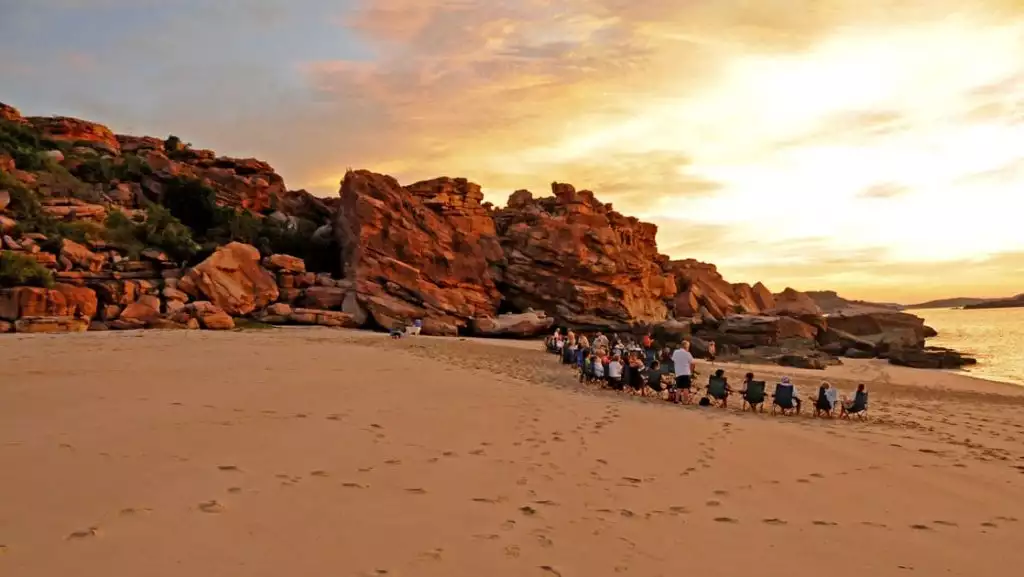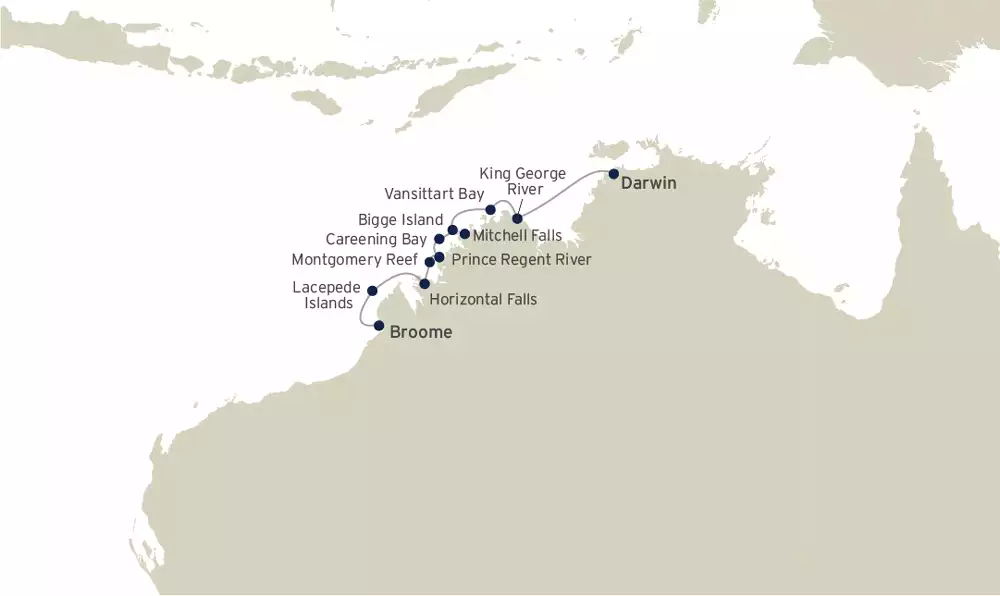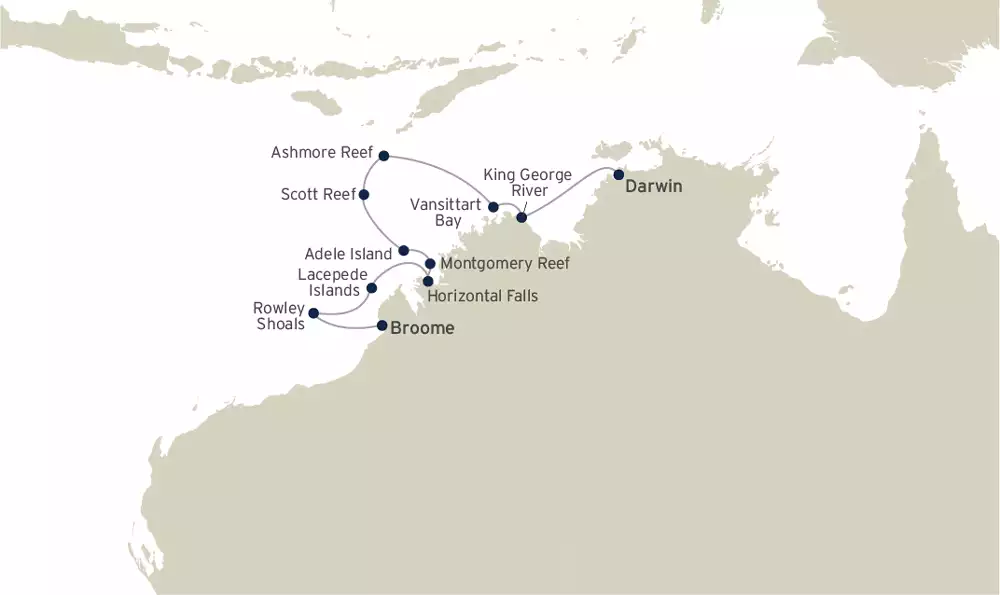No two Kimberley cruises are the same. Each expedition is crafted by experienced captains and expedition leaders around weather, tidal and community requirements. Below is a selection of the key destinations visited.
The Lacepedes
The Lacepede Islands are a protected class-A nature reserve and are significant as a seabird nesting rookery for brown boobies and roseate terns. Other species often sighted at the Lacepedes include Australian Pelicans, frigate birds, egrets and gulls. The four low-lying islands are also an important breeding and nesting habitat for green turtles. If weather and tide conditions are suitable, explore the lagoons by Xplorer and Zodiac tender vessels.
Horizontal Falls (Garaanngaddim) & Buccaneer Archipelago
The Horizontal Falls are one of the Kimberley’s biggest attractions and are a result of the mammoth 36-foot tides the Kimberley is renowned for. Naturalist David Attenborough described the Horizontal Falls as “one of the greatest natural wonders of the world.” This natural phenomenon has been created as the ocean thunders through a narrow gorge in the McLarty Ranges. Water builds up on one side and is forcibly pushed through the bottleneck, creating a rushing horizontal waterfall of swiftly flowing seawater. Riding the rapids on Zodiac inflatable tenders is one of the highlights of Kimberley expedition cruises.
Talbot Bay is at the heart of the Buccaneer Archipelago, where rocks on the 800 or so islands are estimated at over 2 billion years old. At Cyclone Creek, see evidence of massive geological forces in the impressive rock formations and cruise through the Iron Islands, past Koolan Island, before enjoying sunset drinks at Nares Point.
Montgomery Reef (Yowjab)
Montgomery Reef is a biologically diverse area covering over 115 square miles and was named by Phillip Parker King. Twice daily, as the sea recedes in mammoth 36-foot tides, Montgomery Reef rises from the Indian Ocean in a cascade of rushing water revealing a flat-topped reef pockmarked with rock pools and rivulets.
As the reef emerges, get up close in the Xplorer and Zodiac inflatable tenders to witness the spectacle as the expedition team members share their knowledge on the formation of the reef and the myriad wildlife. Opportunistic birds take advantage of the emerging reef, feeding on marine life left exposed in rock pools. Turtles, dolphins, dugongs and sawfish too are also attracted to feeding opportunities as the ocean recedes.
The ocean is awash in a swirl of eddies and whirlpools as the moon’s gravitational force takes hold. Then, a few hours later the entire water-borne drama is reversed as the tide comes in and Montgomery Reef disappears below sea level.
Prince Regent River & Careening Bay (Wunbung-Gu)
King Cascade is a classically beautiful terraced waterfall and is one of the most photographed waterfalls in the Kimberley. Falling from a considerable height and around 165 feet across, water tumbles down a staggered terrace of Kimberley sandstone. Layer upon layer of ochre-hued and blackened rock sprouts grasses, mosses and ferns in a sort of lushly vegetated hanging garden. Reach King Cascade after cruising in the Xplorer tender vessels down the steep-sided Prince Regent River which is a remarkable anomaly as the river runs dead straight along a fault line.
Lt. Phillip Parker King named nearby Careening Bay after he beached his leaking vessel HMC Mermaid to effect repairs. While stranded on this remote coastline for 17 days, the ship’s carpenter carved HMC Mermaid 1820 into the bottle-shaped trunk of a boab tree near the beach. 200 years later, the Mermaid Boab Tree has since split into two trunks and sports a mammoth girth of 40 feet. Significantly, the bulbous tree is listed on the National Register of Big Trees and the carpenter’s careful inscription now stands almost as tall as a person.
Prince Frederick Harbor & Bigge Island (Wuuyuru)
Prince Frederick Harbor is one of the Kimberley’s most spectacular locations. The harbor is dotted with islands lined with mangroves and monsoon rainforests, set against a backdrop of ochre-hued escarpments. White-bellied sea eagles and other birds of prey are often seen here, and at low tide expansive mudflats reveal large populations of mud-skippers and mangrove crabs. Cruise up Porosus Creek to view some striking rock formations. Bigge Island’s Indigenous name is Wuuyuru, and the Indigenous Group of the area is the Wunambal people.
Mitchell Falls & Winyalkan
Tumbling down the Mitchell Plateau in a series of tiered waterfalls and emerald green rock pools, the Mitchell Falls are the photogenic poster child for the Mitchell River National Park. Take a scenic helicopter flight (additional cost) to multi-tiered Mitchell Falls where emerald-hued rock pools cascade down the escarpment and ancient rock art galleries are concealed in caves behind curtains of water.
Mitchell River National Park is inhabited by significant numbers of mammals, amphibians, reptiles and bird species which are lured by a year-round water source. Sandstone terraces beside tiered rock pools make a terrific viewing platform from which to savor the serenity of this ancient landscape.
An alternative option to Mitchell Falls is exploring the sandstone caves of Wollaston Bay or Wollaston Creek. This mass of weathered tunnels, arches and columns form a labyrinth-like maze and was once an Aboriginal midden. In the evening enjoy watching the sunset over the Indian Ocean while indulging in a gourmet BBQ.
Vansittart Bay (Banjal)
Vansittart Bay is home to many cultural and historically significant sites like the remarkable Ngula – Jar Island Gwion Gwion (Bradshaw) rock art galleries estimated to be up to 20,000 years old. Ngula is the Wunambal Gaambera name for Jar Island. Nearby on the Anjo Peninsula, explore the well-preserved wreckage of a US Air Force C-53 Skytrooper aircraft.
King George River & Falls (Oomari Falls)
Fed by the King George River draining across the Gardner Plateau, over-260-foot-tall Oomari – King George Falls are the highest twin falls in Western Australia. Cruise through steep-sided gorges carved many millions of years ago to reach the base of the falls. In waterfall season, cruise under the mist of the falls by Zodiac, while in later months view the honeycomb erosion patterns of sandstone cliffs up close. The Falls is named Oomari by the Balangarra people.
Tiwi Islands
Experience a traditional welcome ceremony and morning tea (damper and billy tea). On a guided tour, learn of the culture and history of the Tiwis while exploring the museum and the old mission precinct. Visit Tiwi Design, one of the oldest and most artistically diverse art centers in Australia, which produces ochre paintings on canvas and bark, ironwood carvings, screen printed fabrics, ceramics, bronze/glass sculptures and limited edition prints. Under the guidance of a local artist, enjoy an afternoon art session to create your own artwork to take home.
On Melville Island, learn about both traditional and contemporary art on a visit to wholly Indigenous owned Munupi Arts at Pirlangimpi. Have the opportunity to purchase traditional Tiwi artworks including paintings, fabrics, carving, pottery and clothing at island prices.
As the incredible Kimberley adventure draws to a close, on the last evening aboard, enjoy the captain’s farewell drinks amongst new-found friends.
